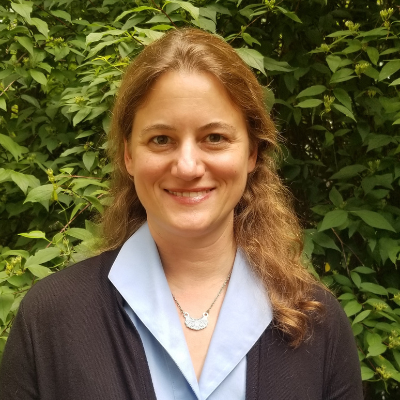
For more than 100 years, radio has bore witness to millions of moments of global, national, and local significance. While many of those broadcasts are lost to time, the Library of American Broadcasting Foundation seeks to preserve radio’s place in history through its mission of preservation and dissemination.
To discuss this worthwhile and monumental undertaking, Radio Ink had a conversation with Laura Schnitker, Ph.D, a Curator of Mass Media & Culture at the University of Maryland’s Special Collections & University Archives, where the Library of American Broadcasting is housed.
Radio Ink: How does the Library of American Broadcasting collaborate with radio stations, educational institutions, and other organizations?
Laura Schnitker: At Special Collections in Mass Media & Culture (of which the LAB is a part), we do most of our collaborative work with organizations and educational institutions. We are one of the co-founding institutions of the Radio Preservation Task Force of the Library of Congress and I am one of the co-chairs of the College, Community and Educational Radio Caucus. We are also an institutional member of the Mid-Atlantic Regional Archives Conference, the Society of American Archivists, and the Association of Recorded Sound Collections, whose organizational records are part of our collections. Our staff and student assistants are active individual members of these organizations, and we often give presentations on our collections, our research, and best practices for archival stewardship. Our collaboration with other educational institutions overlaps with these organizations, particularly the RPTF, and we also regularly send our patrons to repositories with broadcast archives when we don’t have what they’re looking for. This includes the Vanderbilt Television News Archive, the UCLA Film & Television Archive, the Wisconsin State Historical Society, the Paley Center for Media, the American Archive of Public Broadcasting, and the American Radio Archives. Because our missions to preserve and create access to broadcast history are similar to these institutions, we have a very collegial relationship with them. We don’t compete with one another but rather try to work together to enhance our public profiles and visibility to researchers. The AAPB holds a lot of our digitized public broadcasting content and helps to promote those with special exhibits, such as this one for the National Federation of Community Broadcasters.
Radio Ink: What is lost when a radio station fails to maintain a record of its past broadcasts and history?
Laura Schnitker: Broadcast history has much to teach us about where we’ve been as a nation, and where we might be heading. For more than one hundred years, broadcasting has both shaped and reflected our culture in ways that cannot be captured by printed media alone. For one thing, styles of performative rhetoric come across with much more clarity and immediacy through human voices, dialects, clothing, and movement. The depth of feeling that can be conveyed in a joyful exclamation like, “The war is over!” or a statement of a shocking tragedy like, “The President has been shot!” have the power to place us back in those moments, and appreciate a fuller human experience of historical events. Furthermore, the work of reporters, journalists, writers, producers, actors, and musicians, as well as station owners, managers, consultants, and organizations, document behind-the-scenes approaches aimed at making every program relevant to local and national audiences. They helped to establish, challenge, and reinvent narratives that defined eras, created and disrupted patterns of consumption and provided a sense of connection for millions of citizens. These records provide a treasure trove of primary research to historians of all backgrounds.
Unfortunately, most of broadcast history has already been lost. Few radio and television stations have ever attempted to preserve their own histories, whether because the materials were too cumbersome to manage–especially in the case of outdated audiovisual items–or because the ephemeral nature of broadcasting has led to the widespread assumption that once a program has aired, it’s moment of relevance has passed. This is never more true than when station ownership changes hands, and surviving records get tossed into dumpsters to make room for new management and new formats.
A surprisingly large percentage of the collections in Mass Media & Culture comprise materials pulled from those dumpsters by station staff members and engineers, or from career broadcasters who squirreled away their own materials because they recognized their importance; the extra prudent ones convinced their colleagues to do the same. But systemic preservation plans continue to elude most networks and organizations, who still regularly dispose of their records even though there is plenty of demand for them. Michael J. Socolow, Associate Professor of Communication and Journalism, University of Maine, and member of the Radio Preservation Task Force makes some excellent points in this article on why we should save broadcasting’s past.
Radio Ink: Can you share an example where archived radio material played a significant role in understanding a historical event or cultural shift?
Laura Schnitker: There are far too many to name here because I think all of our researchers, and we have over 250 a year from all over the world, are using our materials to help understand historical events and cultural shifts. We don’t always see the results of their research, but here is a short list of recently published books whose authors used our collections: Making Radio: Early Radio Production and the Rise of Modern Sound Culture by Shawn Vancour, Selling Women’s History: Packaging Feminism in Twentieth-Century American Popular Culture by Emily Westkaemper, Say It Loud!: Great Speeches on Civil Rights and African-American Identity, edited by Catherine Ellis and Stephen Drury Smith, Pauline Frederick Reporting: A Pioneering Broadcaster Covers the Cold War by Marilyn S. Greenwald.
We also do our own digital history projects to showcase the value of our collections in illuminating American history, which you can peruse here.
Everything we have has a story to tell and does its part to expand the historical record.
What are the challenges faced by radio stations in preserving their history, especially as technology rapidly changes?
Laura Schnitker: I think the biggest challenge is the oldest one: radio stations have never made a practice of saving their own histories, and technological changes are only part of that. With no aftermarket for radio broadcasts, stations had no real economic incentive to try to save airchecks, and questions of copyright, especially in the case of popular music and third-party copyright holders, also dissuaded them. They don’t typically have archivists working on their staffs so they lack the basic knowledge for managing their own records. And when stations change management or formats, which they do pretty often, whatever did get saved more often than not ends up in a dumpster with an “out with the old in with the new” attitude.
Radio Ink: The Library of American Broadcasting has archived recordings of Edward R. Murrow, classic radio scripts, and the Westinghouse tapes. To someone reading this and thinking their content isn’t “library-worthy” because of where they’re located or what they cover, what would you tell them?
Laura Schnitker: That if they’ve saved anything, it’s always worth having a conversation with a curator to find out if it has value. Some basic online searches can also show whether their materials are rare or in demand.
Radio Ink: One of the most special collections the Library has is its History of Women in Media and of Black broadcast history. Are those collections and stories that today’s broadcasters can add to?
Laura Schnitker: Yes! It’s especially important that we try to recover the histories of underrepresented groups in broadcast history. Women, people of color, and members of LGBTQIA+ communities have always been marginalized in broadcasting, and surviving records of their contributions are even more rare than those of the white male voices that still dominate broadcasting today. With access to these valuable voices and stories, researchers from all disciplines can help balance the historical record with more accurate and inclusive narratives. It’s good that you “noticed” we have these collections; it means our efforts to enhance their discoverability are paying off.
Radio Ink: What initiatives for the future are you most excited about?
Laura Schnitker: The AAPB recently reached out to us to let us know they’ve received a substantial grant from the Mellon Foundation to help archives digitize more audiovisual content. They are particularly interested in local broadcasting that focuses on public affairs, presented by and for members of underrepresented communities. Digitization is a long and arduous process, but it’s worth the time because we’re racing against the clock to save the content from these deteriorating formats. The AAPB has been a wonderful partner to us, and their generous offer to fund this recent initiative is like giving us a $500,000 grant we didn’t even have to apply for.
Radio Ink: Probably a very difficult choice here – do you have a personal favorite piece in the collection?
Laura Schnitker: There are far too many for me to choose just one, but I have very fond memories of the time I spent with the Edwin Dooley WLW collection when I first started working here as a student assistant. Dooley was a station engineer for decades at WLW and literally pulled over 6,000 transcription discs out of the dumpster. I was tasked with creating an inventory, which entailed listening to these discs from the 1930s, 40s, and 50s and trying to find out more about their context. It was a great introduction to radio history and audiovisual archiving. One of my best finds was a broadcast of the “Hour of Charm” which was a late 1930s program that featured an “all-girl” jazz orchestra. I had read about this era in graduate school (Sherrie Tucker’s book Swing Shift), but had never actually heard what the broadcasts actually sounded like. I thought it was even more cool that this particular aircheck was on a glass disc, which as you might imagine is extremely fragile, but which, if actually preserved, sounds very, very good – if it can avoid being shattered.
For further reading and information, visit Laura’s libguide, “How to Preserve Broadcast History.” To support the mission of the Library of American Broadcasting Foundation’s mission, visit here.
On Tuesday, November 14, the LABF will honor its 2023 Giants of Broadcasting at Gotham Hall in New York City. This year’s honorees include radio figureheads like Caroline Beasley and Nina Totenberg alongside household names like Wolf Blitzer, Juju Chang, and Tony Danza. Limited tickets remain here.

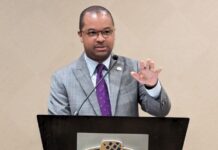
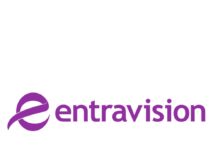
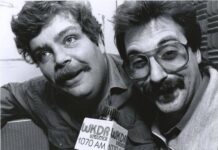

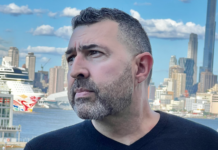



You doubt are aware of David Gleason’s collection at worldradiohistory.com, and extensive aircheck archives at reelradio.com.
Every word spoken on KCAA has been preserved since we established our podcast system in 2005. All of it is available on demand without a paywall.
Broadcast history is a fascinating subject that one doesn’t have to work in the industry to appreciate – especially when you can see or hear the actual content as it was presented in its original context. For all of us who enjoy things like Ellis Feaster’s YouTube aircheck channel, or rejoice when a lost/destroyed episode of “Doctor Who” is rediscovered, it becomes easy to see why preservation is important. Investing the time and money, though, always seems to be an issue. We’ve all laid that one cassette aside and said, “This show is a keeper; I’ll label it later.”